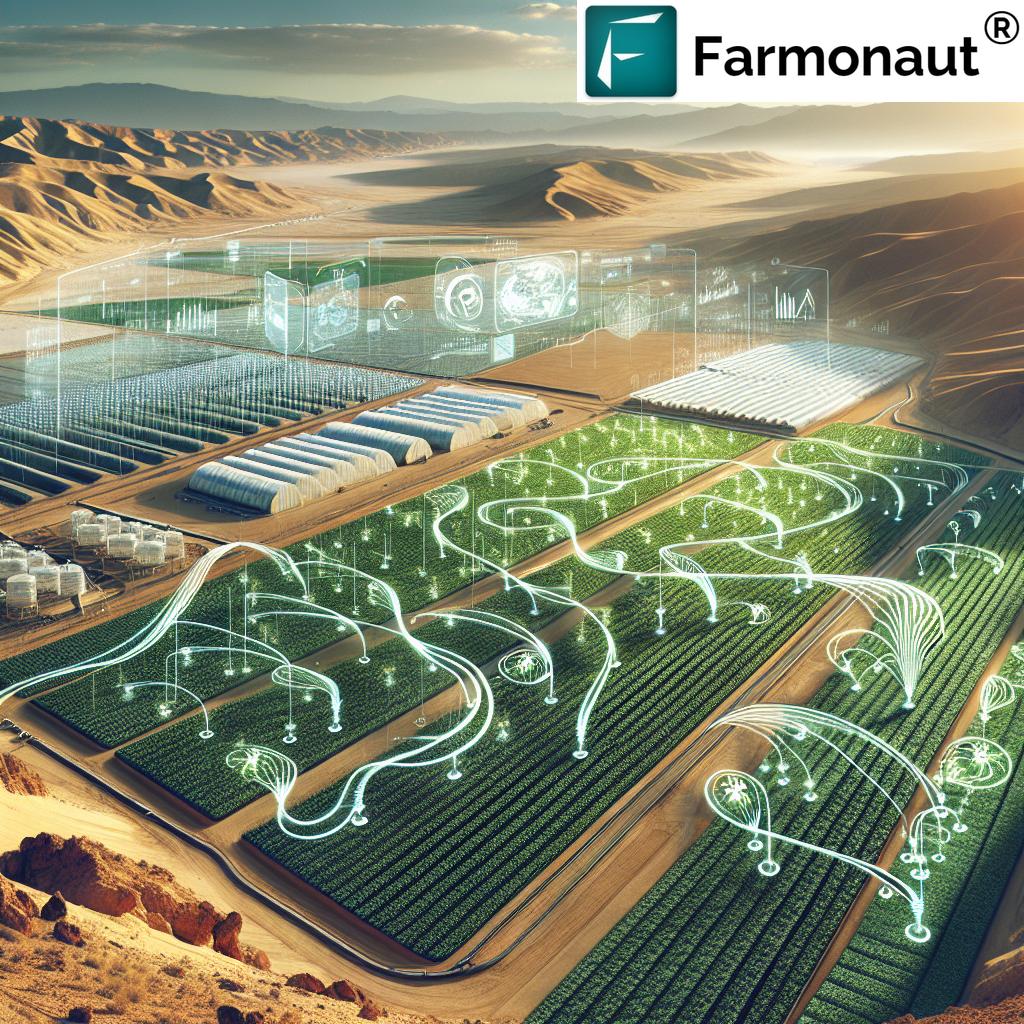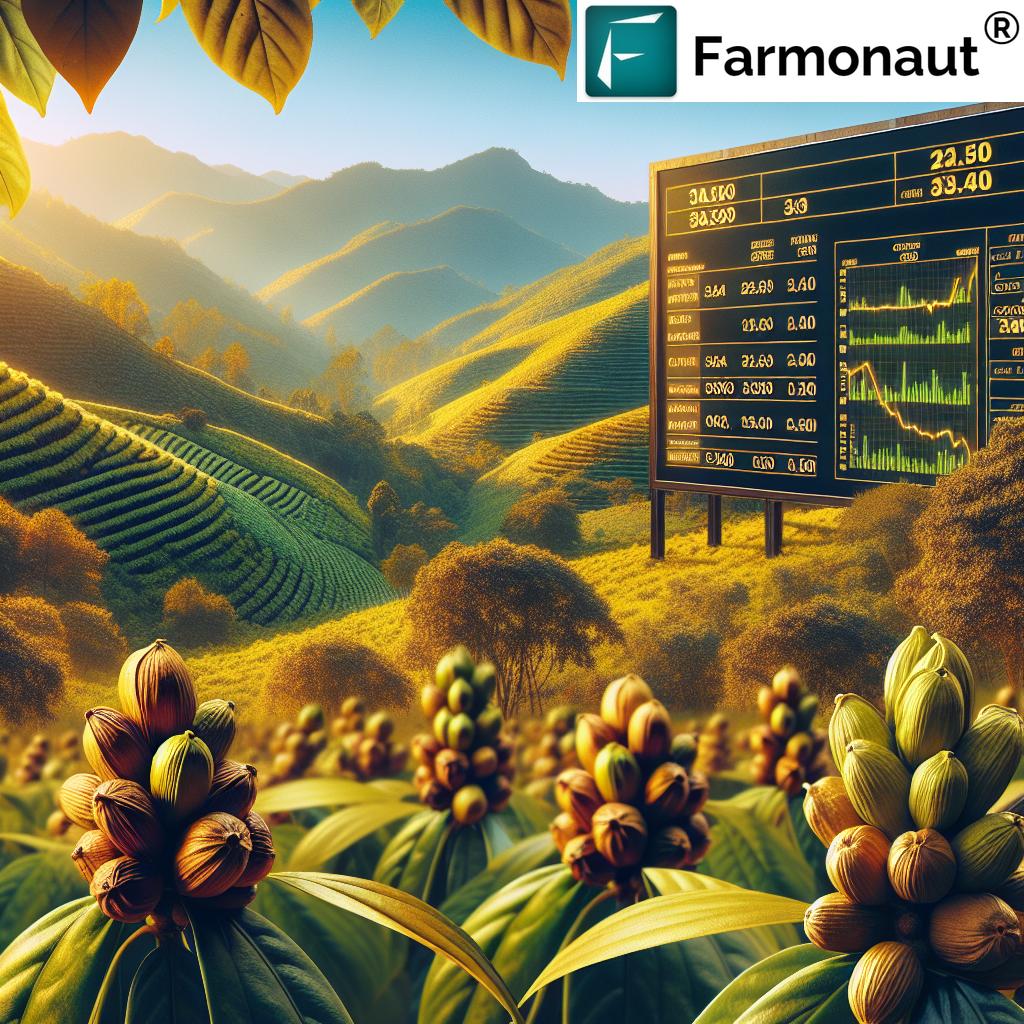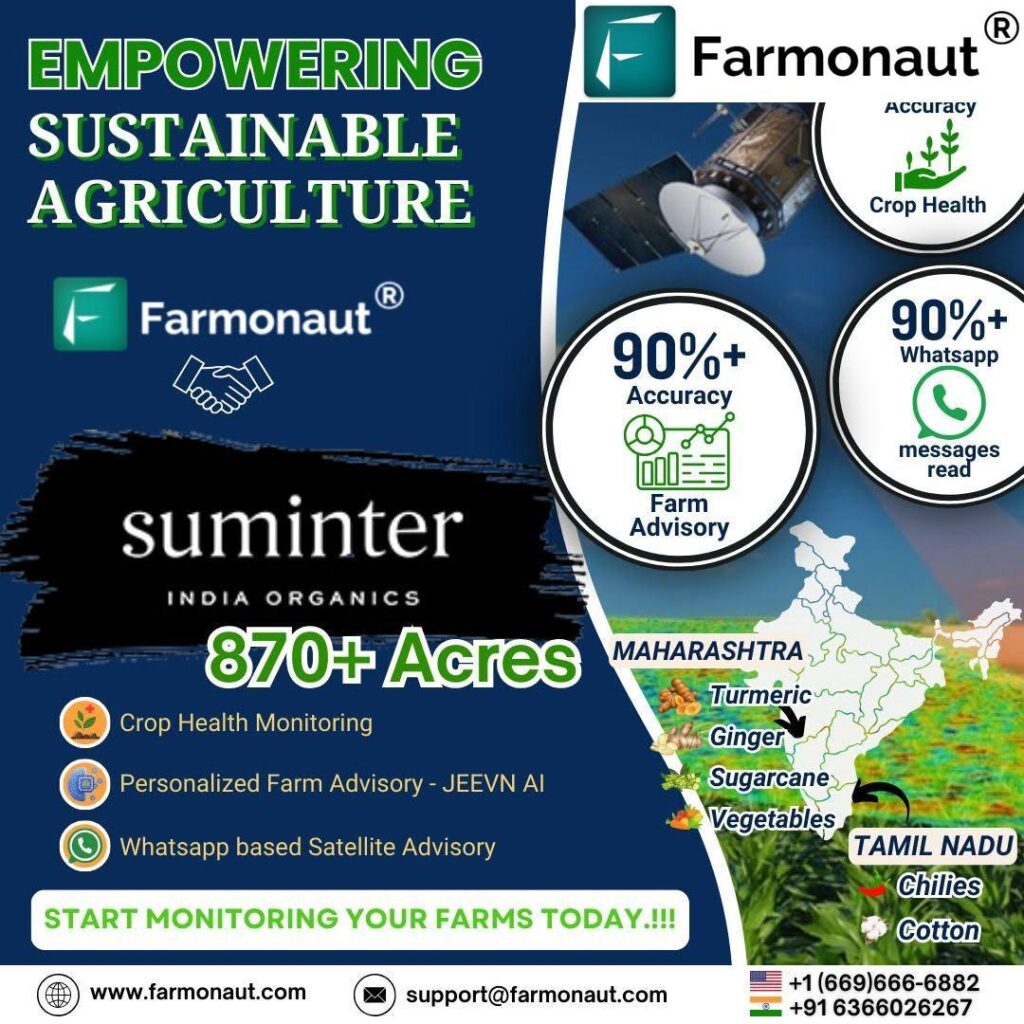Modern Agriculture Trends 2025: Innovations in India
“By 2025, over 60% of Indian farmers are expected to adopt precision farming technologies for increased efficiency.”
Introduction: Modern Trends in Agriculture – Shaping the Future of Farming in 2025
Agriculture in India stands tall as the backbone of the nation’s economy and the lifeline of millions. As the world advances towards 2025, modern agriculture trends are ushering in a transformation that is both profound and promising. With a rapidly growing population, increasing resource scarcity, and escalating climate uncertainties, India’s farming needs to evolve—leveraging technologies and embracing innovative practices to ensure productivity, sustainability, and food security.
In this comprehensive guide, we’ll explore the modern trends in agriculture—from precision farming and digital technologies to climate-smart solutions and sustainable methods—shaping the future of farming in India for 2025 and beyond.
Experience the future of agriculture on-the-go with Farmonaut’s apps, providing real-time satellite monitoring, AI advisories, and resource management—empowering farmers and businesses across India.
Top Modern Agriculture Trends 2025 in India
The trends of agriculture in 2025 vigorously respond to the ongoing transformation triggered by technology adoption, changing consumer behavior, and urgent environmental challenges. We will detail the following key innovations:
- Precision Agriculture and Smart Farming
- Climate-Resilient Practices
- Sustainable and Organic Farming
- Mechanization and Automation
- Digital Agriculture and Market Linkages
- Biotechnology and Crop Improvement
- Water Management Innovations
“India’s agri-tech market is projected to reach $24 billion by 2025, driven by digital and sustainable innovations.”
Comparison Table of Key Agriculture Trends in India (2025)
| Trend | Brief Description | Adoption Rate in India (%) | Impact on Yield/Profitability (%) | Example Innovations |
|---|---|---|---|---|
| Precision Farming | Use of GPS, drones, and IoT sensors for targeted resource application and monitoring crop/soil health. | 60+ | 20-35% increase | Drones, Farmonaut Satellite Monitoring, AI Crop Advisory |
| Digital Technologies | Apps and platforms enabling farmers to access market, weather, and advisory information in real-time. | 65+ | 15-28% increase | Farmonaut Mobile/Web App, Blockchain Traceability |
| Sustainable Practices | Shift towards organic, eco-friendly inputs and conservation farming for long-term soil and water health. | 30-40 | 10-20% increase (premium pricing) | Organic Fertilizers, Bio-Pesticides |
| Climate-Smart Solutions | Practices improving resilience to climate change, like drought-resistant varieties and weather-based advisories. | 45+ | Up to 20% (variable) | CRISPR Crops, Weather Monitoring Apps, Satellite Analysis |
| Mechanization & Automation | Use of modern machinery, AI-powered tractors, and robotics to optimize labor and increase efficiency. | 35-55 | 15-30% reduction in labor cost; yield increase varies | Custom Hiring Centers, Robotics, Automated Seeders |
| Water Management | Innovative irrigation systems and sensors for efficient water use, crucial in water-scarce areas. | 48 | Up to 40% reduction in water waste; 12-22% yield gain | Drip Irrigation, Satellite Moisture Tracking |
| Biotechnology & Crop Improvement | Development of high-yield, pest-resistant, and climate-adaptive crop varieties for Indian conditions. | 40+ | 18-30% yield increase (variety dependent) | Gene Editing, CRISPR, Improved Seeds |
Precision Agriculture and Smart Farming: The Leading Trend in Modern Agriculture 2025
Precision agriculture stands at the forefront of modern farming agriculture in India. This trend’s foundation lies in leveraging technologies like GPS, IoT sensors, drones, satellite imagery, and AI to monitor and manage crop health, soil conditions, weather patterns, and input application with unparalleled accuracy.
How Precision Agriculture Works
- Satellite Imagery supplies real-time, wide-area views of crop health and soil moisture (e.g., using NDVI, EVI data). We at Farmonaut deliver such monitoring via affordable subscriptions, accessible both on our app and API.
- Drones equipped with high-resolution cameras quickly scan fields, identifying early signs of pest infestation, disease, or water stress. They can also manage fertilization, irrigation, or pesticide application with pinpoint accuracy to reduce waste and maximize yields.
- IoT Devices installed on the ground continuously monitor soil conditions, temperature, and humidity to provide nuanced insights for farming decisions.
- AI-based mobile applications—like Farmonaut’s platform—empower Indian farmers to use smartphones for advisory support on when, where, and how much input to apply.
The widespread adoption of precision farming is helping farmers across India increase productivity, lower input costs, and enhance crop security, making this one of the most significant trends of agriculture in 2025.
Climate-Resilient Practices: Preparing Indian Agriculture for Change
Climate change is impacting agricultural productivity worldwide, but in India, the effects are particularly acute. Modern agriculture trends 2025 put a spotlight on climate resilience, as farmers face unpredictable weather patterns, increased drought occurrences, floods, and emerging pest threats.
Key Climate-Smart Strategies
- Drought-Tolerant Crop Varieties: Seed technology and breeding programs introduce crops that survive water stress. This is supported by improved genetics, including CRISPR and gene-editing (see Biotechnology section).
- Integrated Pest Management: Combining biological controls, cultural practices, and judicious input use to reduce chemical dependence and manage pest risk.
- Agroforestry: The deliberate integration of trees with crops or livestock enhances biodiversity, improves carbon sequestration, and increases resilience to climate shocks.
- Conservation Agriculture: Techniques such as minimum tillage, cover cropping, and mulching improve soil retention, reduce erosion, and conserve water.
- Weather-based Advisory Systems: Farmers increasingly rely on AI-driven advisories (like Farmonaut’s Jeevn AI) to plan actions around seasonal climate fluctuations.
By embracing these climate-resilient strategies, India’s agricultural sector is better equipped to meet future challenges and ensure long-term food security.
Sustainable and Organic Farming: Safeguarding Soil, Water, and Our Future
The rising consumer demand for organic and sustainably produced food is driving a critical shift among farmers in India towards sustainable practices. Modern agriculture trends 2025 revolve around reducing chemical inputs (fertilizers, pesticides), improving soil health, and fostering ecosystem balance.
Core Sustainable Practices for 2025
- Bio-Fertilizers and Bio-Pesticides: Natural inputs are being widely adopted, minimizing negative soil and water impacts.
- Crop Rotation and Polyculture: Rotating crops and cultivating multiple species help break pest/disease cycles and naturally replenish soil nutrients.
- Organic Certification and Market Linkage: Indian government support is growing, providing subsidies, technical support, and market access for organic produce.
- Premium Pricing and Export Opportunity: Organic, certified produce enables farmers to obtain premium prices both domestically and for export.
Linking Sustainability to Technology
- Farmonaut’s Carbon Footprinting tool enables organizations to monitor and reduce the carbon impact of agriculture, a vital step for meeting evolving environmental regulations as well as new consumer requirements for “green” foods.
- Farmonaut Product Traceability solution uses blockchain to guarantee supply chain authenticity for organic produce, which further enhances market trust and export potential.
Mechanization and Automation: Next-Gen Tools for Indian Farming
The movement from traditional farming to modern mechanization characterizes another major agriculture trend in India for 2025. By introducing efficient machinery and automation, farmers—especially small and medium landholders—are overcoming labor shortages, increasing operating margins, and improving productivity.
Breakthroughs in Mechanization
- Custom Hiring Centers (CHCs): These centers allow multiple farmers to share access to modern farm machinery—tractors, seed drills, harvesters—at affordable rental rates.
- Autonomous Tractors and Robotics: New-generation machinery equipped with AI and navigation sensors perform precision planting, weeding, and harvesting with minimal manual intervention.
- Drone-Based Spraying: Drones are increasingly used not just for monitoring but also for precision pesticide/fertilizer application on large and small holdings.
- Smart Equipment Tracking:
- Farmonaut’s Fleet and Resource Management solution empowers agricultural businesses and CHCs to track, manage, and optimize equipment usage, reducing unnecessary downtime and operational costs.
Mechanization and automation are not only bringing efficiency to traditional agriculture but are making modern farming accessible to a wider population across India.
Digital Agriculture & Market Linkages: Bridging the Information Gap
The digital revolution is fundamentally shaping the future of Indian agriculture. In 2025, mobile apps and platforms enable instant access to crucial knowledge, advisories, financial services, and market connections.
Key Advantages of Digitalization
- Weather Forecasting and Crop Advisory: Real-time data on weather patterns and soil conditions let farmers plan with more confidence.
- Direct-to-Market Solutions: Digital marketplaces and e-commerce channels empower farmers to sidestep intermediaries, capturing higher value and selling produce transparently.
-
Financial & Credit Access: Seamless digital payment systems and lending analytics make finance and crop insurance more accessible and secure.
Explore Farmonaut’s satellite-based crop loan and insurance verification solutions—helping both financial institutions and farmer communities enhance security and reduce fraud risk. - Adoption of AI-Based Applications: AI and machine learning, integrated with remote sensing and ground sensors, drive insights into optimal irrigation, fertilization, and pest control.
Accessibility and Affordability
With the rapid expansion of rural internet and smartphones, digital tools are increasingly affordable. For example, Farmonaut democratizes satellite insights and farm management through flexible mobile/web interfaces and open APIs.
Developers and businesses can integrate modern Farmonaut data services in their systems (see the API documentation here).
Biotechnology & Crop Improvement: Breeding the Next Generation of Crops
Biotechnology is rewriting the script of modern agriculture by improving crop varieties for higher yield, pest/disease resistance, and enhanced nutrition. In India, CRISPR and gene-editing technologies are pushing the envelope beyond GMOs, allowing for crops that are better adapted to the country’s soil conditions, weather, and resource constraints.
- High-Yield, Short Duration Seeds: New varieties help farmers diversify cropping patterns and quickly adapt to unpredictable monsoons or late rains.
- Pest and Disease-Resistant Varieties: Less reliance on chemical inputs not only reduces environmental damage but also improves profit margins.
- Biofortification: Crops enhanced to deliver better nutrition (e.g., higher iron, zinc) align with food security and nutrition policies in India.
How Data Accelerates Progress
Using satellite imagery and AI, companies like Farmonaut empower breeding programs and policy-makers with real-world crop performance and spread across the landscape. Real-time analytics help in fast-tracking approval and commercialization of improved seeds, ensuring better adoption rates for India’s future farming needs.
Water Management Innovations: Combatting Scarcity for a Sustainable Agriculture Future
Water scarcity has become a central challenge in India’s agriculture. Efficient irrigation techniques and water management are among the most essential modern trends in agriculture for 2025, especially in rain-fed regions or areas with declining groundwater.
Breakthrough Water Management Tools and Techniques
- Drip and Micro-Sprinkler Irrigation: These precise systems deliver water directly to the plant roots, resulting in up to 40% savings compared to conventional methods.
- Sensor-Based Water Application: Soil moisture sensors trigger irrigation only when required, significantly reducing water wastage and maximizing efficiency.
- Satellite Soil Moisture Monitoring: Real-time visualization of regional and farm-level soil moisture via multispectral satellites supports smart scheduling and overall water resource management.
- Real-Time Alerts and Integration: Pairing geospatial data with weather monitoring systems allows anticipatory action—avoiding crop loss due to water stress or excess.
- Farmonaut’s Large Scale Farm Management solution delivers tools for water efficiency, team management, and analytics across thousands of hectares, elevating the performance of FPOs, cooperatives, and agri-enterprises.
Farmonaut: Satellite-Based Innovation Powering India’s Agriculture Trends in 2025
As agriculture trends in India surge towards digital transformation, data-driven management, and sustainability, advanced solutions are necessary to deliver the flexibility, depth, and accuracy required at scale.
We at Farmonaut provide an integrated, satellite-powered platform for real-time monitoring, advisory, traceability, and impact management.
- Satellite Monitoring: Multispectral images power accurate crop health and soil moisture maps—delivered via web/mobile apps and APIs.
- AI-Driven Advisory (Jeevn): Personalized recommendations leveraging weather, crop, and satellite data for smarter input management and planning.
- Blockchain Traceability: End-to-end authenticity for sustainable and organic produce, building global consumer trust.
- Environmental Compliance: Real-time carbon monitoring and compliance, improving sustainability scores and export eligibility.
- Fleet & Resource Management: Vehicle, machinery, and input tracking for better utilization and operational cost savings.
Affordable. Scalable. Inclusive.
Our business model means that everyone—from the smallest farmer to large enterprises—can afford world-class agricultural technology. Flexibility ensures solutions are shared or scaled as needed.
Integrate with us via API or see developer options here.
Farmonaut Subscription Plans
Choose the best-fit plan for your farm, organization, or business, and access features for monitoring, advisories, resource management, and traceability.
Frequently Asked Questions About Modern Agriculture Trends 2025
What are the main modern trends in agriculture for 2025 in India?
The main modern trends in agriculture for 2025 include precision farming using GPS, drones, and AI; digital technologies for advisory and market access; climate-resilient practices; sustainable and organic farming; mechanization and automation; biotechnology for improved seeds; and advanced water management innovations.
How is precision farming changing traditional agriculture in India?
Precision farming uses technology—like satellite imagery, farm management apps, IoT sensors, and drones—to apply inputs only where and when they’re needed. This minimizes waste, reduces costs, improves yields, and reduces the environmental impact compared to traditional approaches.
Can small farmers in India adopt digital agriculture tools affordably?
Yes. With the expansion of rural internet and smartphone use, affordable subscription models—like what we at Farmonaut offer—provide access to real-time satellite insights, AI-driven advisories, and digital management tools across all farm sizes.
What are the key benefits of sustainable and organic farming practices?
Sustainable and organic practices improve soil and water health, reduce chemical input use, support biodiversity, and open up premium pricing opportunities. These trends are gaining traction as consumer demand for sustainably produced food rises sharply in 2025.
How does biotechnology support the future of food security in India?
Biotechnology ensures food security by enabling the development of crops and seeds that are higher-yielding, climate-resilient, nutrient-rich, and pest-resistant—crucial for India’s rapidly changing weather and population growth.
Where can I access advanced agriculture monitoring technology in India?
You can use Farmonaut’s web/mobile apps or API to access satellite-driven crop monitoring, AI advisories, traceability solutions, and fleet/resource management tailored for India’s modern agriculture.
Conclusion: Shaping the Future of Farming in India—Embracing Modern Agriculture Trends 2025 and Beyond
As we progress into 2025, modern agriculture trends in India are unequivocally shaping a sector that is efficient, sustainable, and resilient. The convergence of precision farming, digital innovation, sustainability practices, mechanization, and biotechnology is transforming farming livelihoods and redefining agricultural productivity for future generations.
Adopting these trends is not merely an option—it is essential to ensure that Indian agriculture continues to serve as the backbone of food security and a thriving economy. By leveraging data, embracing sustainable practices, and integrating next-generation technology, Indian farmers can empower themselves, safeguard the nation’s resources, and successfully meet both domestic and global demands.
For organizations and farmers eager to stay at the cutting edge, Farmonaut’s comprehensive, scalable solutions ensure you are ready to navigate the future of agriculture in 2025—with the insight, data, and tools you need to thrive.










